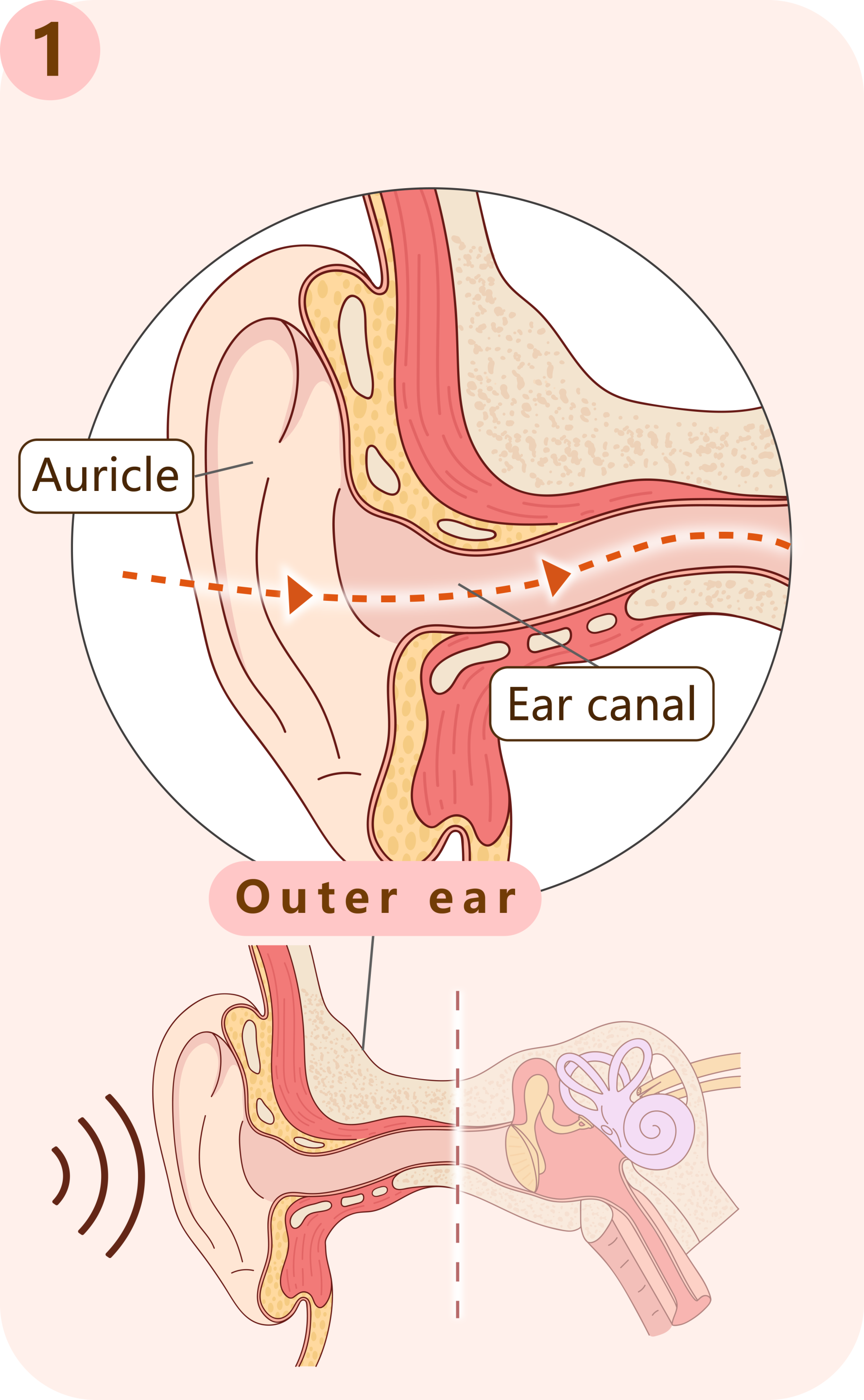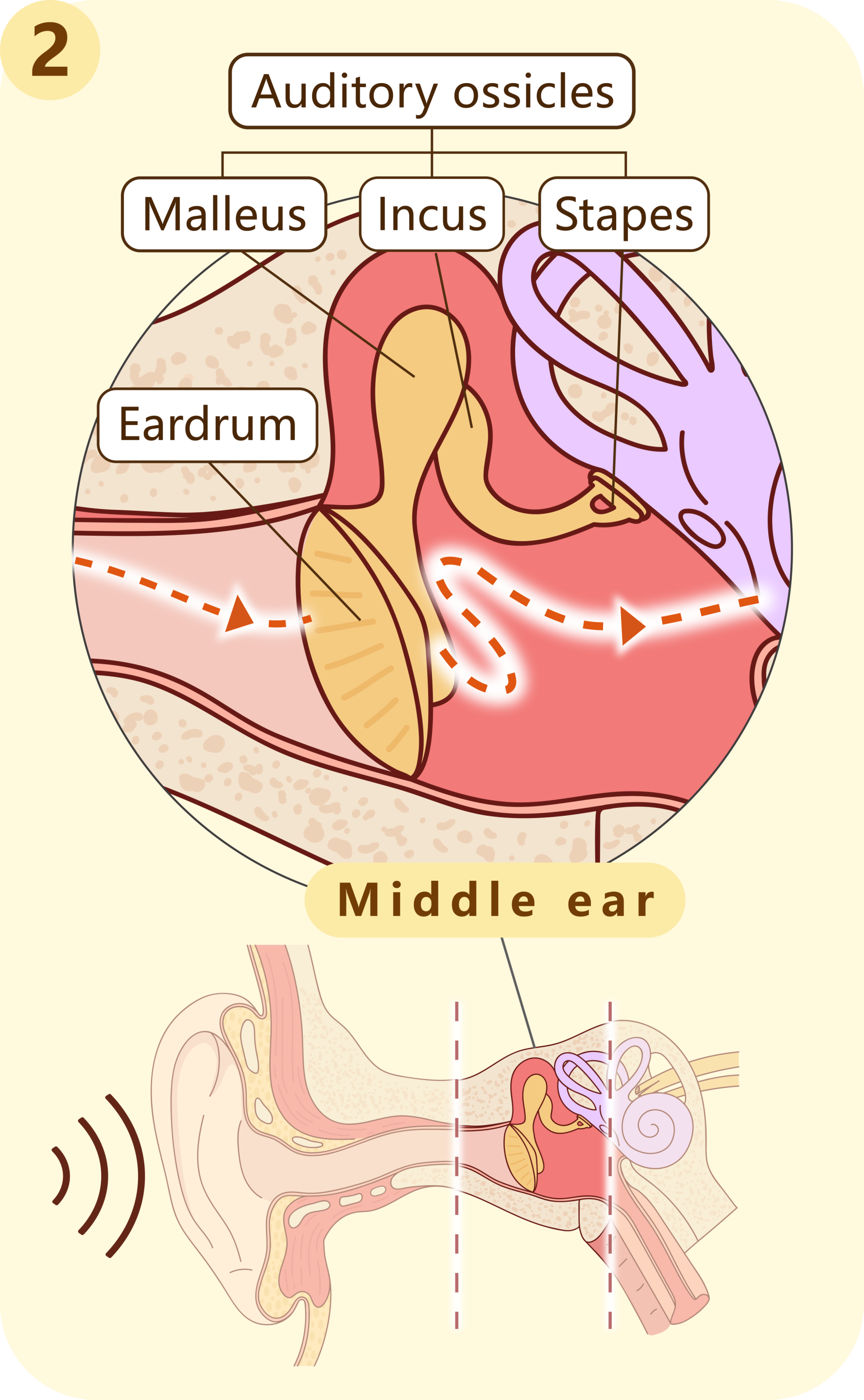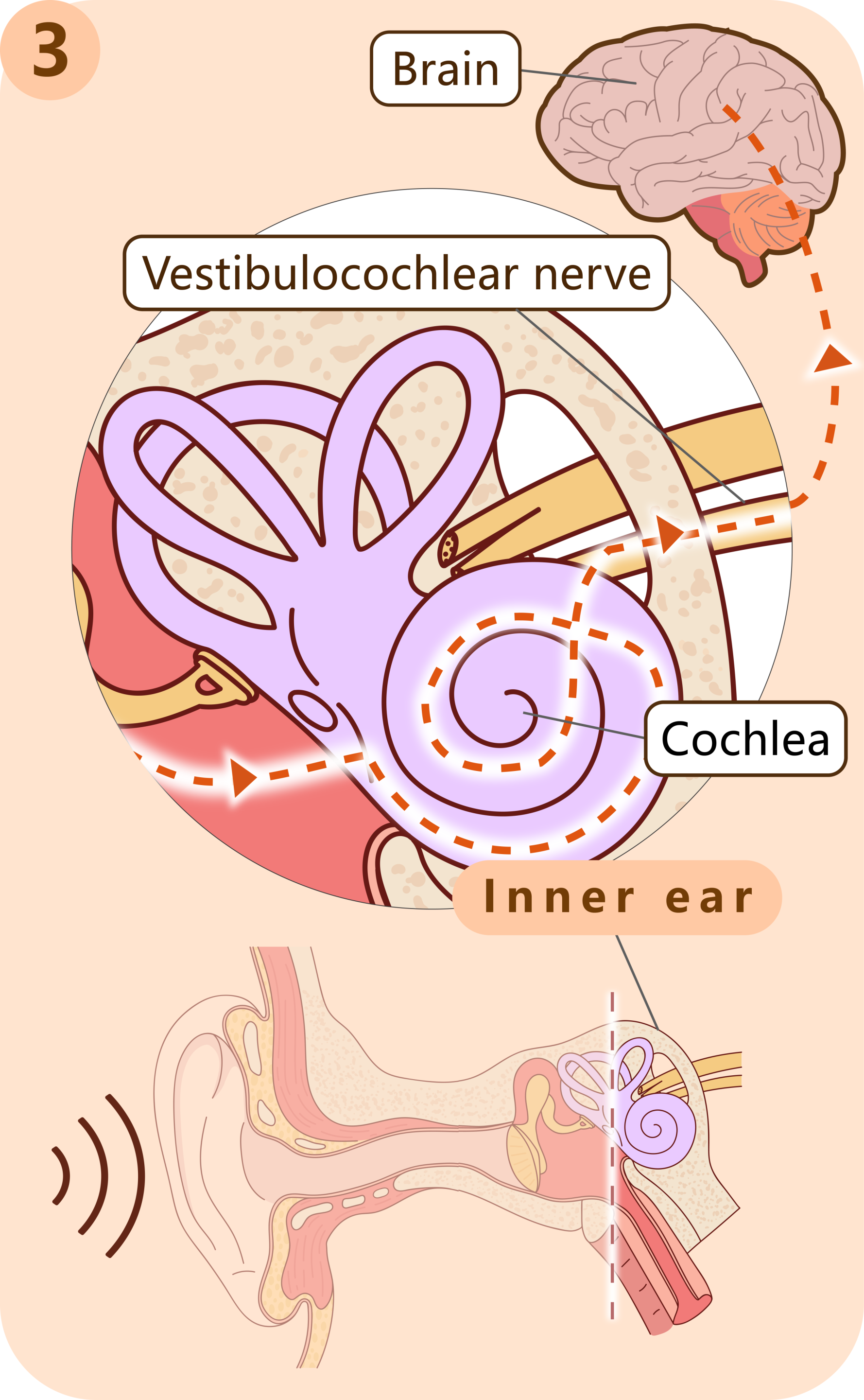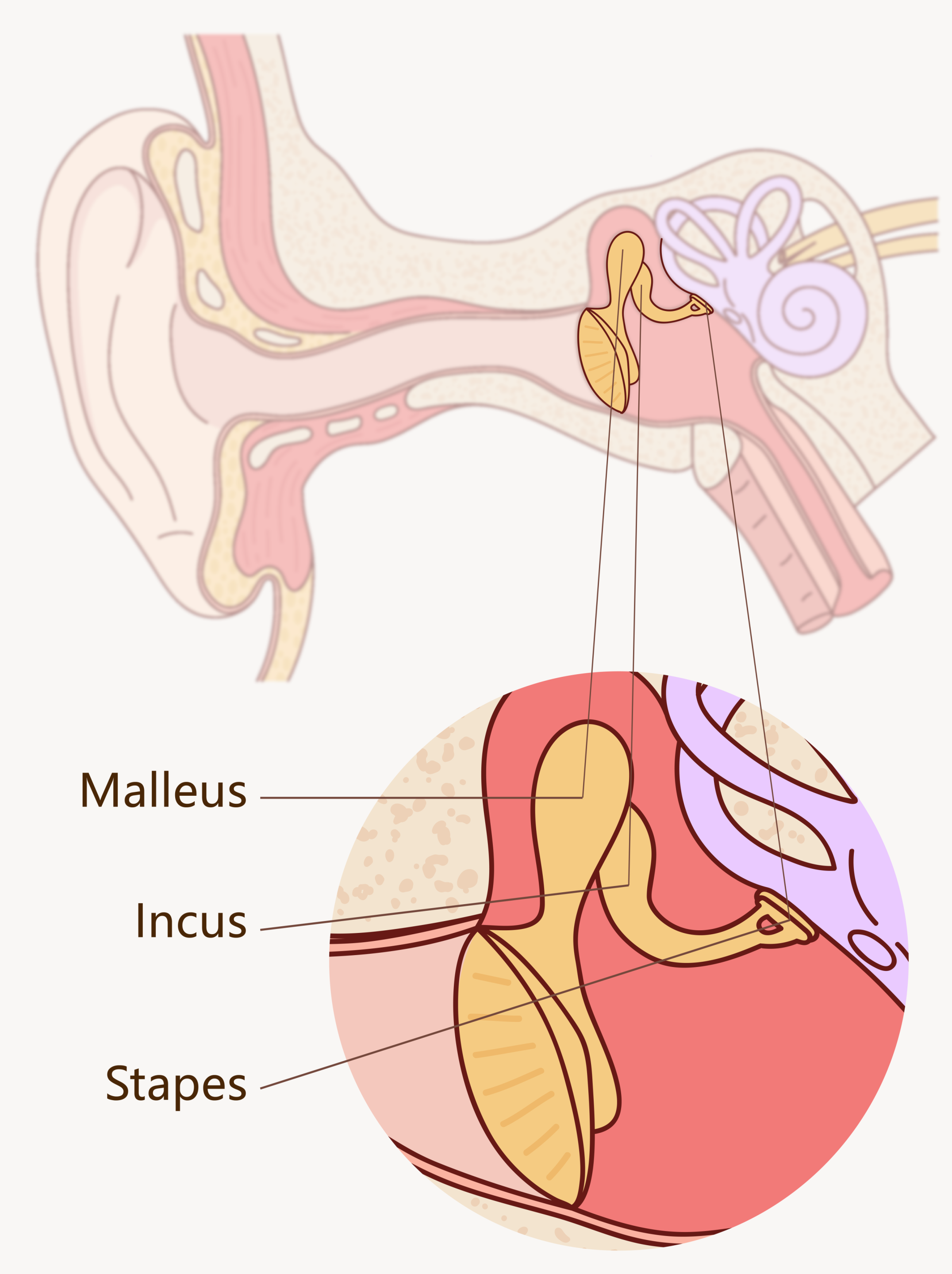

Our ear consists of three parts, they are outer ear, middle ear and inner ear.
( ![]() Click the image to enlarge )
Click the image to enlarge )



- The outer ear is where most people visibly recognized as “ear”, which includes the auricle (or pinna) and the ear canal.
- The auricle looks like a horizontal funnel and is responsible for collecting sound waves and transmitting them to the eardrum through the ear canal.
- When sound waves reach the eardrum, the eardrum would receive them as vibrations. The vibrations would then be transmitted to the auditory ossicles, which located on the other side of the eardrum, based on the principle of a leverage. At the same time, auditory ossicles would magnify the vibrations and convert them to motions.
The motions would then create fluid fluctuations inside the spiral-shaped cochlea (aka the inner ear) by the auditory ossicles tapping against the cochlea. The rippling fluid would stimulate the sensory cells within the cochlea to generate auditory nerve signals; which would further be transmitted to the brain through the vestibulocochlear nerve in order to produce hearing.
Did you know…


Tiniest bone in our body
Auditory ossicles consist of three bones, they are called the malleus, incus, and stapes. Stapes is the smallest and lightest bone in our body.











